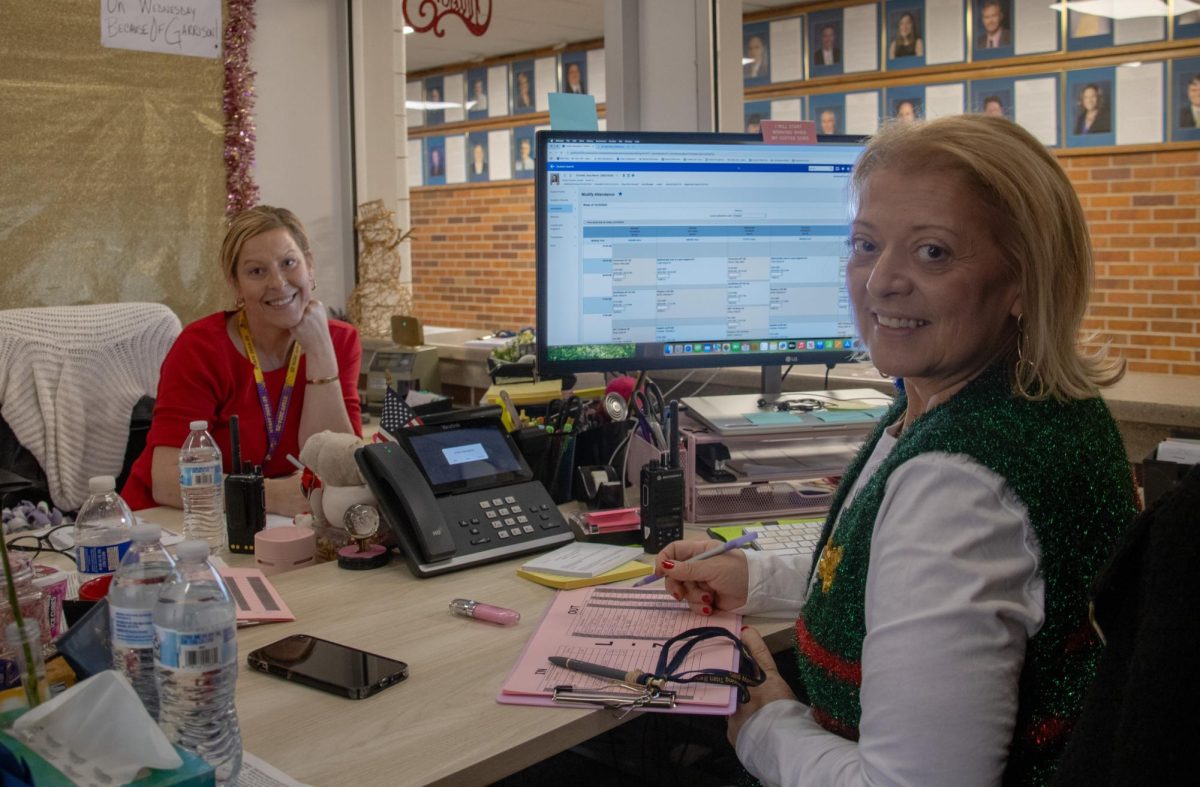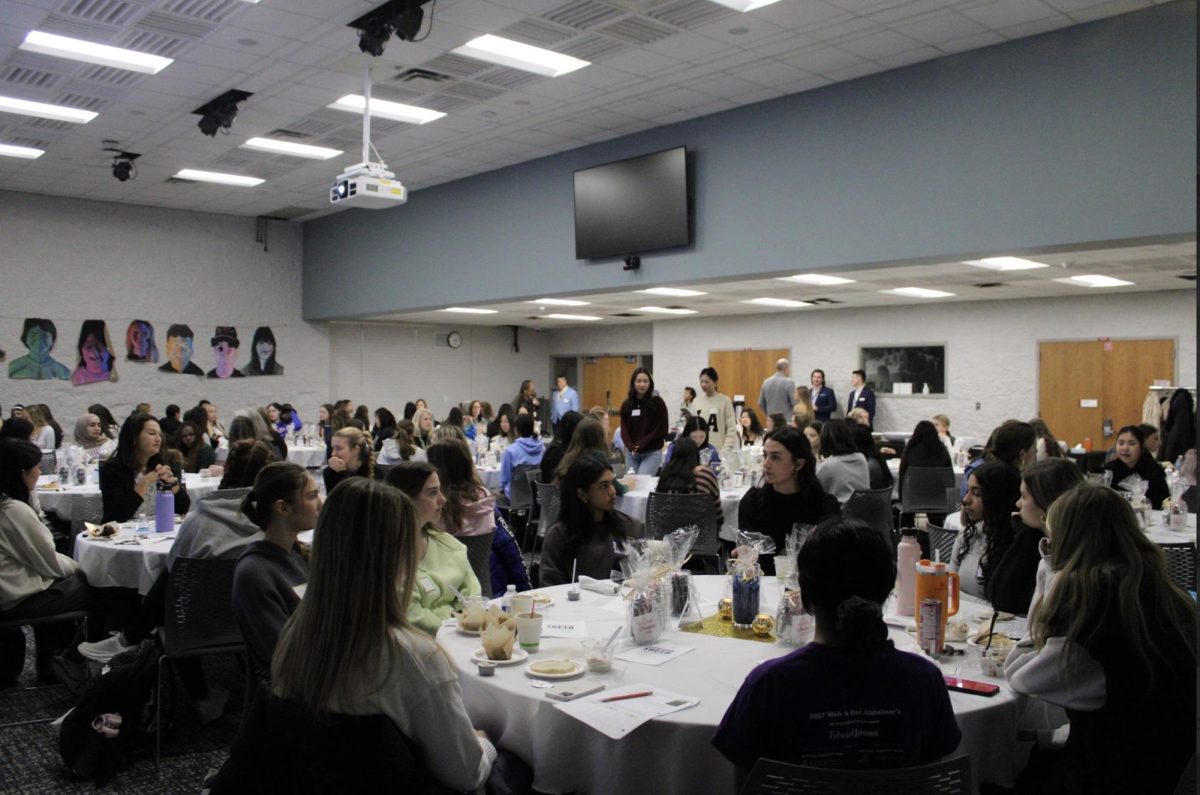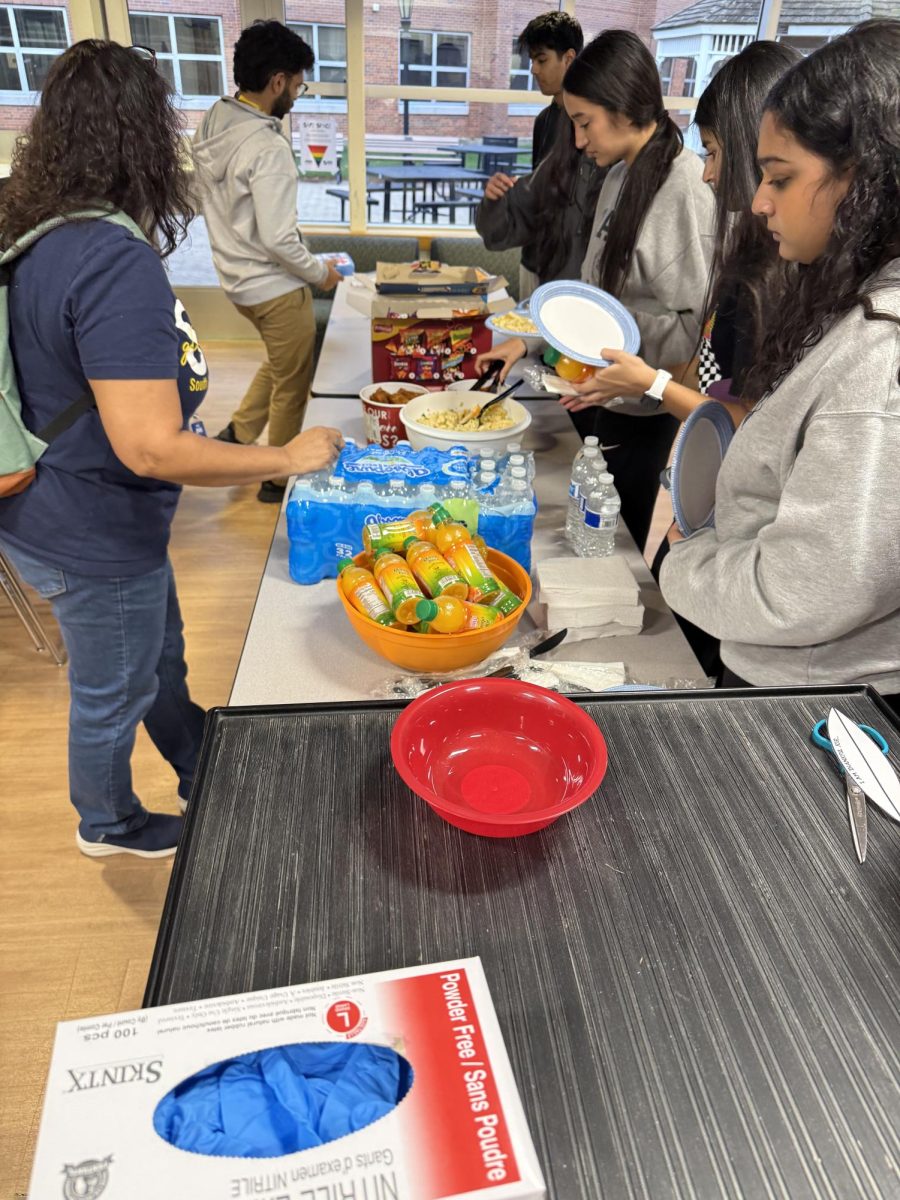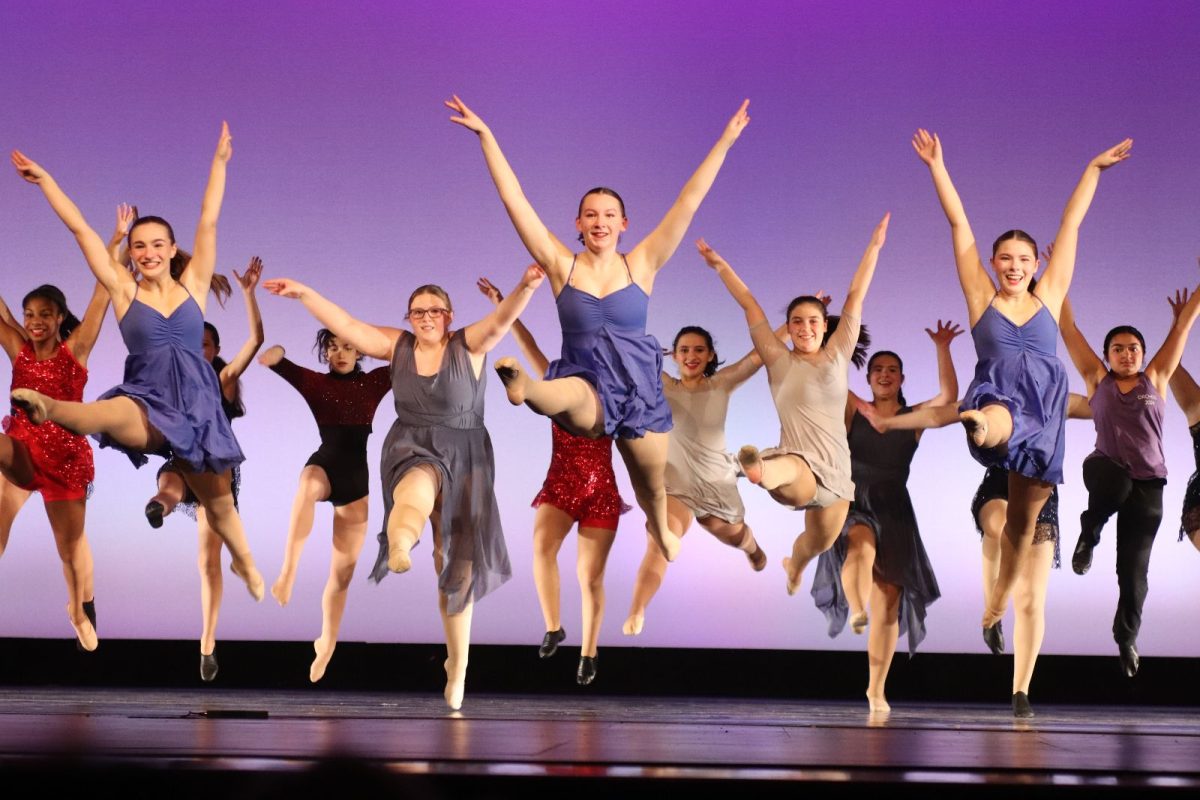The annual STEM Maker Faire, an opportunity for STEM students to present their end of the year projects, took place in the cafeteria on May 22 from 6:30 to 8:30 p.m., Michael Sinde, Career and Technical Education teacher, said.
The Science, Technology, Engineering, and Math, or STEM Maker Faire has taken place at South for 10 years, Sinde said. Students in the Science Engineering Learning Community (SELC), Science Independent Research Studies (SIRS), and other STEM-related classes create a project for the event. Students use the science knowledge that they have learned from STEM classes, Sinde said, to create these projects, which vary by group. Freshmen, sophomores, and juniors work on their projects for about two months, while seniors work on their projects all year long, senior Alex Burstein said. Burstein and his group have been working to fix a problem that has been impacting South.
“This year we’re working on solving the bussing issue here at school,” Burstein said. “A lot of the security guards [at South say] it’s really tough for them and really tough for kids to find their buses because there are so many [of them].”
Burstein’s group is coding an app that updates every day and tells students the location of their bus. This will lower student confusion and help security guards focus on keeping the roads outside of South safe. Sophomore Nicole Kayumov and her group are creating something to increase participation on the day of the Maker Faire.
“My group and I are making a cookie dispenser,” Kaymov said. “We wanted [our] project [to be something] that everyone would want to come to during the Maker Faire and we thought that food would be something people would [like].”
The STEM Maker Faire also prepares students for their future careers in sciences, as it prepares them for what they will do in college, Sinde said.
“We have students deciding from projects all over the sun, everything from a trebuchet [which is a type of catapult] to autonomous robots, to pancake flipper, you name it, to showcase their skills,” Sinde said. “[This] is similar to what they would do in senior year in college, so they get to experience what they would do in college and troubleshoot throughout that process.”
Students do not have to have a fully successful project to learn something, Sinde said. Maker Faire’s purpose is to educate kids on how to be resilient and problem solvers, which they can carry on in any career they choose.
“One of the most [important parts of the] Maker Faire is to grow and have that growth mindset, not necessarily to always have a working prototype,” Sinde said. “You can learn just as much from a non-working prototype as you can from a working prototype.”









